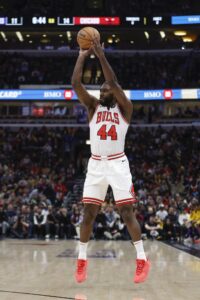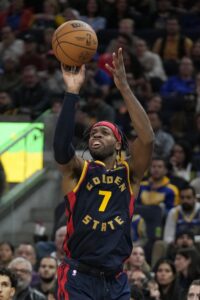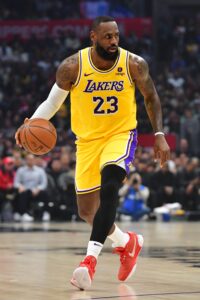The defending champion Celtics have been on a spending spree, re-signing their own free agents and locking up rotation players to lucrative extensions.
The Sixers made the biggest free agent splash, signing Paul George. The Knicks made a stunning trade, acquiring Mikal Bridges from their crosstown rival. The Cavaliers have given out extensions to three starters. The Bucks still have the duo of Giannis Antetokounmpo and Damian Lillard.
So it’s easy to forget that the Pacers were in the Eastern Conference Finals. Their biggest star is Tyrese Haliburton, currently the 12th man on Team USA’s loaded roster. Haliburton pulled a hamstring in Game 2 against the Celtics, though the Pacers were heavy underdogs anyway. But it may have made the series a little more competitive if he had stayed healthy.
Haliburton had some ups and downs during the playoffs but delivered in a big way in his best outings. Now, he’s wondering why the Pacers are being overlooked as one of the top contenders in the East.
“All I keep seeing is, ‘Who’s going to win the East? Boston, Milwaukee, New York, or Philly?’” Haliburton said recently. “It’s like, what are we doing [not being included]? But again, we’re Indiana, people didn’t even know, people didn’t even watch us play until the playoffs. People didn’t watch us play until the second round. But again, that respect comes with winning. So if we want to gain that respect, we just got to keep having success as a team. And it’s coming.”
Like Boston and Cleveland, the Pacers’ offseason has been highlighted by locking in some of their regulars to new contracts. Pascal Siakam received a max four-year deal in free agency and Andrew Nembhard, who posted big numbers in Games 3 and 4 of the conference finals with Haliburton out, signed a three-year contract extension. Siakam’s backup, restricted free agent Obi Toppin, was also re-signed.
Myles Turner remains one of the most productive centers in the league and the Pacers also have a solid young 1-2 punch at small forward in Aaron Nesmith and Bennedict Mathurin. Head coach Rick Carlisle is one of the best in the business, a future Hall of Famer with a championship on his resume.
Undeniably, there’s plenty of quality pieces all over the roster. But are they still lacking that one major impact player to put them over the top? Haliburton could be a perennial All-Star but is he more suited to being the No. 2 player on a championship team than the franchise player?
Those are a couple of questions some experts have about the Pacers, though there’s no reason to expect that they’ll regress. In fact, with the experience they gained in the postseason, they could be even more dangerous next season.
That brings up to today’s topic: Do you feel the Pacers are underrated? Where do they currently rank in the Eastern Conference’s pecking order? Do they need another impact player or can they win a championship with the roster they’ve already built?
Please take to the comments section to weigh on this topic. We look forward to your input.




 [RELATED:
[RELATED: